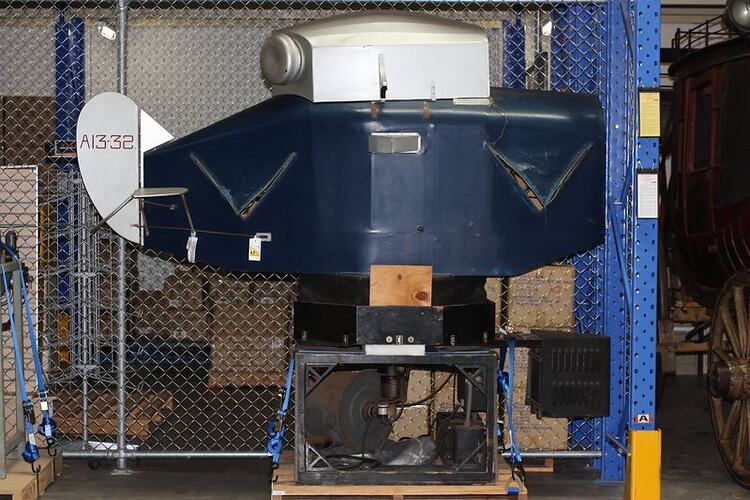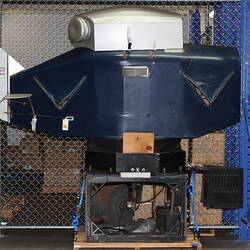The Link Trainer was developed in the United States by Edwin A. Link who patented his first flight simulator design in 1931. His family operated an organ and piano factory which gave Link the idea for using vacuum powered bellows to operate a three-axis (pitch, roll and yaw) simulator mounted on a pedestal. Student pilots could safely learn the technique of 'blind flying' at night or in cloud without leaving the ground. A small order was placed with Link's Binghamton, NY factory by the United States Army Air Corps in 1934. In 1938, the first Link Trainer (A13-1) was delivered to the Royal Australian Air Force (RAAF) which soon placed an order for another seven via the British Air Ministry to provide one Trainer for each RAAF Station. Previously, the National Instrument Company in Melbourne (part of Australian National Airways) held the agency for Link products. NIC first imported a Link Trainer in October 1937 which was demonstrated to the public at the Melbourne Town Hall in December 1937. The unit was designed to teach instrument flying to Douglas DC-2 and DC-3 pilots at Essendon and the instrument panel had been set up to replicate these machines.
The Second World War began in September 1939, bringing a massive increase in the number of pilots required for military service and large orders for Link Trainers resulted. The Empire Air Training Scheme involved all Dominions of the British Empire. Additional Link Trainers were used at most RAAF flying training schools during the war, mostly the AN-T-18 model. The Trainer was connected to a desk at which an instructor could view and chart the movements of the student in the Trainer and communicate via a headset. The RAAF aircraft type number A13 was used supposedly to avoid problems with a flying type carrying the 'unlucky' number 13. About 210 link trainers of all types were used by the RAAF. Many of the later model D series Link Trainers were ordered and used after 1945. Link also developed a Celestial Navigation Trainer (CNT) for night bomber crews to train in astro-navigation. The RAAF used three of these large multi-crew CNT units delivered in 1944.
More Information
-
Keywords
-
Localities
-
Authors
-
Article types

